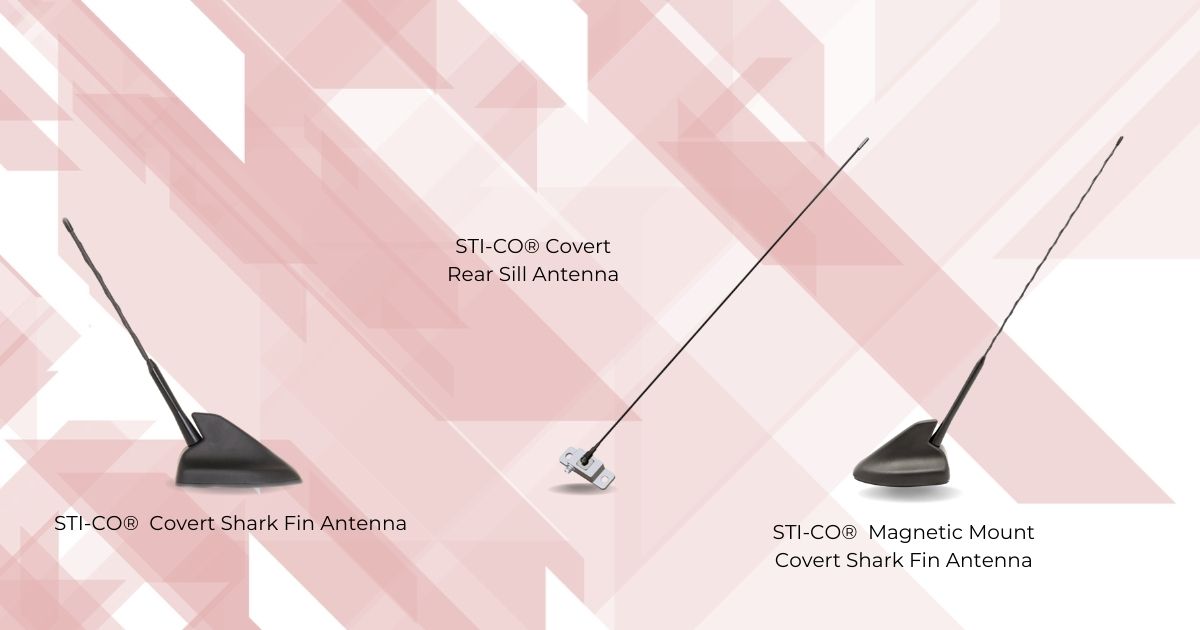Antenna Design for Covert Operations
Posted by STI-CO® Antenna Solutions on 17th Aug 2023
Have you ever been frustrated by an antenna that just doesn't perform as expected? Maybe it's not meeting the desired frequency range, or perhaps its physical size is causing limitations for your specific application. You're not alone. Many in the covert antenna realm grapple with these challenges, seeking solutions that align with their unique needs.
With decades of experience in the antenna design industry, STI-CO has encountered and addressed a myriad of these challenges. From understanding the intricate balance between frequency and wavelength to navigating the complexities of VSWR requirements, our team has honed a systematic approach to design, experimentation, and customer satisfaction.
In this article, you'll gain insights into the common challenges faced in antenna solutions and how they can be addressed. We'll walk you through a real-world example of how we transformed a customer's underperforming antenna into an efficient, application-specific solution. By the end, you'll have a clearer understanding of key design considerations, the iterative design process, and how to navigate the constraints and challenges inherent in antenna design. Dive in and demystify the world of antenna design parameters.
Common Challenges in Antenna Solutions
- Performance Expectations: One of the most frequent issues customers face is the performance of the antenna not meeting their expectations. This could be due to a variety of reasons, from the frequency range and bandwidth requirements to power handling and VSWR (Voltage Standing Wave Ratio) requirements.
- Mechanical Limitations: Sometimes, the challenge isn't about how the antenna performs electrically but rather its physical attributes. An antenna might be too tall or too heavy for a specific application, making it unsuitable for the intended use.
- Compatibility Issues: The VSWR response in the desired range might be too high, making it incompatible with certain transmitters. This means that the antenna isn't well-matched to the transmitter, leading to inefficiencies and potential system failures.
Addressing Antenna Challenges: A Real-World Example
To provide a clearer picture, let's consider a real-life scenario. A customer approached our team with an antenna that wasn't performing up to their expectations. The team, after understanding the challenges and examining the existing solution, brainstormed internally to come up with a design that would cater to the customer's needs. This involved considering various factors like frequency range, bandwidth requirements, power handling, and VSWR requirements.
The result? A design that, while lacking a certain feature present in the original antenna, outperformed the latter in terms of overall performance. This new antenna was not only more efficient but also better suited to the customer's specific application.
STI-CO’s Process for Design, Experimentation, and Meeting Customer Needs
1. Design Process and Experimentation:
- Customer Requirements: The design process begins with understanding the customer's requirements, such as the frequency range they want the antenna to operate at.
- Initial Calculations: Before starting a design, the lowest operating frequency is determined, and the wavelength is calculated. This helps in understanding the size of the antenna required.
- Trade-offs: If the desired frequency results in an impractically large antenna, trade-offs might be needed. This could involve adjusting the frequency or making other design changes.
- Validation: Once the design is complete, it's validated to ensure it meets the specified requirements.
2. Performance Outcomes and Iterative Design:
The design process is iterative, meaning designs are continually refined based on testing and feedback to achieve the best performance outcomes.
The goal is to ensure the antenna is efficient and meets the desired specifications.
3. Key Design Considerations:
- Frequency and Wavelength: The frequency determines the speed at which the wave oscillates. The wavelength, calculated based on the speed of light and the operating frequency, determines the size of the antenna.
- Bandwidth: This is the difference between the highest and lowest operating frequencies.
- Polarization: It's essential to know if the system is vertically or horizontally polarized to ensure the antenna is designed correctly.
- Power Handling: Depending on the power requirements (e.g., 100 watts, 50 watts, 5 watts), the materials and design might vary.
- Gain: Gain describes how well energy is focused in a particular direction. Depending on the application, you might want an omnidirectional antenna (for vehicles) or a more directional one (for point-to-point communication).
- Antenna Type (Monopoles vs. Dipoles): The design might vary based on whether the antenna needs to be ground plane dependent or independent.
4. Constraints and Challenges:
- Size Constraints: Depending on the frequency, the antenna might become too large or too small, affecting its efficiency.
- Material Constraints: The type of material (metal, fiberglass) on which the antenna is placed can affect its performance.
- Trade-offs: Sometimes, to meet certain requirements, other aspects of the design might need to be compromised.
Getting Started With STI-CO Product Design and Products
In the world of covert antennas, challenges have always been a constant. From grappling with performance expectations to navigating mechanical limitations, many have felt the sting of an antenna solution that falls short of their needs. It's a familiar pain that resonates with many in the industry.
However, as we've explored in this article, there are systematic approaches and design considerations that can address these challenges. By understanding key parameters like frequency, bandwidth, and power handling, and by leveraging iterative design processes, it's possible to achieve antenna solutions that are both efficient and tailored to specific applications.
Looking ahead, the journey to mastering antenna design doesn't end here. As technology evolves and requirements shift, continuous learning and adaptation are crucial. We invite you to explore our antenna solutions by browsing the STI-CO catalog of products. There, you'll find a wealth of resources and cutting-edge products designed to meet your every need. Don't let past challenges hold you back; equip yourself for the future with STI-CO.
Frequently Asked Questions: Antenna Design for Covert Operations
How do covert antenna designs differ from standard antenna designs?
Covert antenna designs focus on minimizing visual detection. This can involve using materials that blend with the surroundings, constructing the antenna in a compact form, or integrating it within another object to conceal its presence.
What factors should be considered when selecting an antenna for covert applications?
Key factors include the operational frequency range, bandwidth, size, and form factor, as well as the specific environmental conditions and the level of concealment required. The antenna's compatibility with existing communication systems is also crucial.
Can covert antennas be custom-designed for specific applications?
Yes, many manufacturers, like STI-CO specialize in creating custom covert antennas to meet specific operational requirements, ensuring optimal performance while maintaining discretion.
How do environmental conditions affect covert antenna performance?
Environmental factors such as terrain, weather conditions, and the presence of obstacles can impact signal propagation and antenna effectiveness. Covert antenna designs often incorporate features to mitigate these effects and ensure reliable performance. However, you can also take these additional considerations to extend the lifespan of your covert antenna.
What maintenance is required for covert antennas?
While covert antennas are designed for durability and long-term use, regular maintenance checks are recommended to ensure optimal performance. This might include inspections for physical damage, performance testing, and adjustments as necessary.



